Endangered species recovery at FMR restoration sites
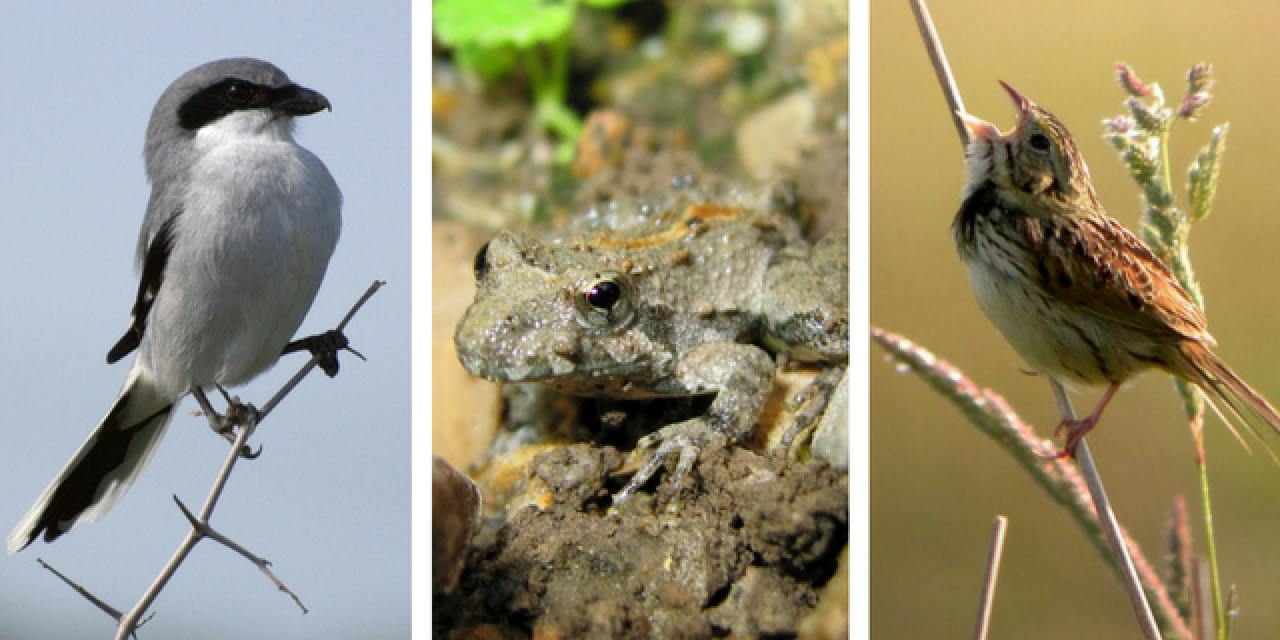
By 1973, populations of many of America’s most iconic species were declining. Unregulated hunting, the overuse of lead and pesticides, and rampant development and habitat loss had pushed many animals to the brink of extinction. Birds were especially hard-hit. California condors and whooping cranes, for example, had declined so precipitously that their wild populations languished in the double digits, reaching lows of 55 and 43 respectively.
Enter the Endangered Species Act. Signed into law in 1973 by President Richard Nixon, the ESA allowed for the listing of imperiled species and expanded programs and funding to protect them.
Now, over 40 years later, the act is widely lauded as a success. While not every listed species has seen its population increase, the majority have at least stabilized. Take continental birds: 85% of listed bird species have experienced population stabilization or growth. More impressively, among increased populations the average growth rate was a whopping 624%. This is at or higher than the rate expected by many federal recovery plans. Conversely, populations of birds not protected by the ESA declined an average of 24% since the mid-1970s.
Many of the ESA's most famous success stories were due in part to active breeding and management programs. However, for birds and other species that have experienced population increases under the ESA, gains were also due to habitat improvements. To protect populations of listed birds and amphibians, agencies had to make strides toward improving water quality in lakes and rivers and regulating or preventing further pollution. These actions benefit not only listed species, but all species that use those areas.
The FMR connection
Though we often include specific enhancements to benefit a particular creature — like planting milkweeds to bolster monarch butterflies or creating a hibernaculum to provide snake habitat — FMR restoration efforts are rarely designed for one species alone. Instead, our restorations are designed to provide healthy, functioning native ecosystems that will benefit a whole host of native plants and animals.
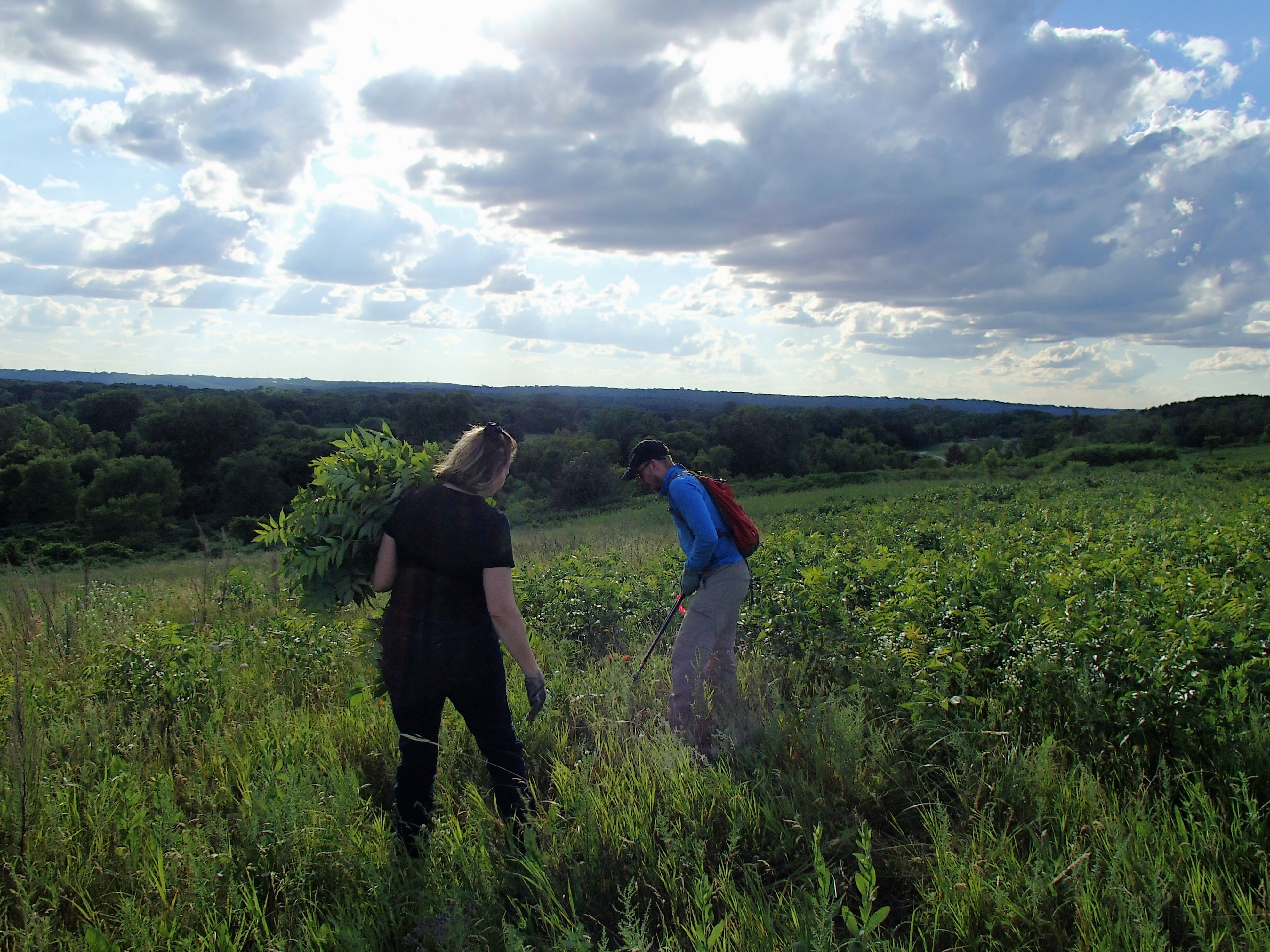
FMR volunteers remove sumac from the prairie at Grey Cloud Dunes SNA. Restoring prairie at this and other sites provides much needed habitat for rare plants and animals.
However, it’s music to our ears when rare or endangered (federally or otherwise) species are found using our properties. (FMR has conducted habitat restoration on roughly 1,500 acres, and maintains and monitors just over 50 sites in the metro area.) In recent years, we’ve found a few examples of just that!
Spotted! A trio of endangered species
Henslow’s Sparrow
Status: Endangered in Minnesota
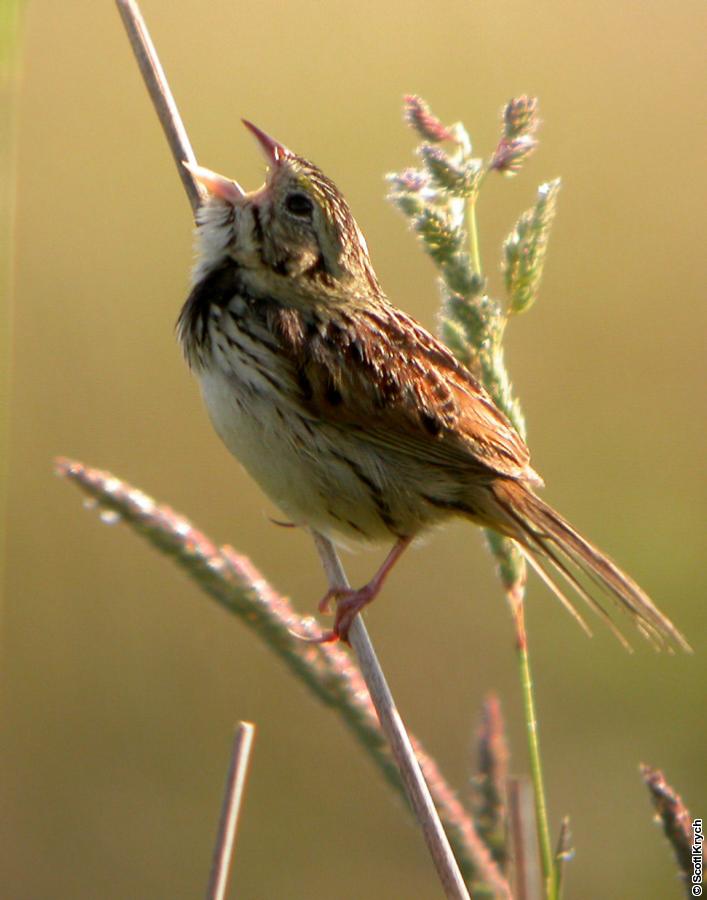
Henslow's sparrow. Photo credit: Scott Krych
The Henslow’s sparrow is a small grassland bird that breeds across the northeastern United States and upper Midwest, and overwinters along the southern tier of states east of the Rockies. It’s a diminutive bird with a raspy, insect-like call. Some would call it drab, but it is beautiful to see its return.
As prairies have disappeared, this grassland-dependent species has declined over 68% since 1966. In Minnesota alone, 99.5 percent of what was once 18 million acres of prairie have been converted to agriculture and other development. So when we see this bird at our prairie restoration sites it is especially rewarding.
In 2016, we found three individuals at a 20-acre site that we'd first converted from cropland to native prairie in 2011. At another 18-acre restoration area, located next to a larger prairie remnant, four singing male Henslow’s sparrows were found in 2015, plus another at a third restoration site. All of the sites were in Dakota County and within a few miles of each other, so if these populations become established they may support each other.
More about these small birds:
— They’re identified by their olive head with dark stripes.
— Males use tall forbs as perches from which to sing and survey their territory.
— Nests are built at the bases of grass clumps, and females construct runways through the leaf litter as escape routes from potential predators.
— Females lay an average of four-five eggs, which hatch in just 11 days!
Loggerhead shrike
Status: Endangered in Minnesota
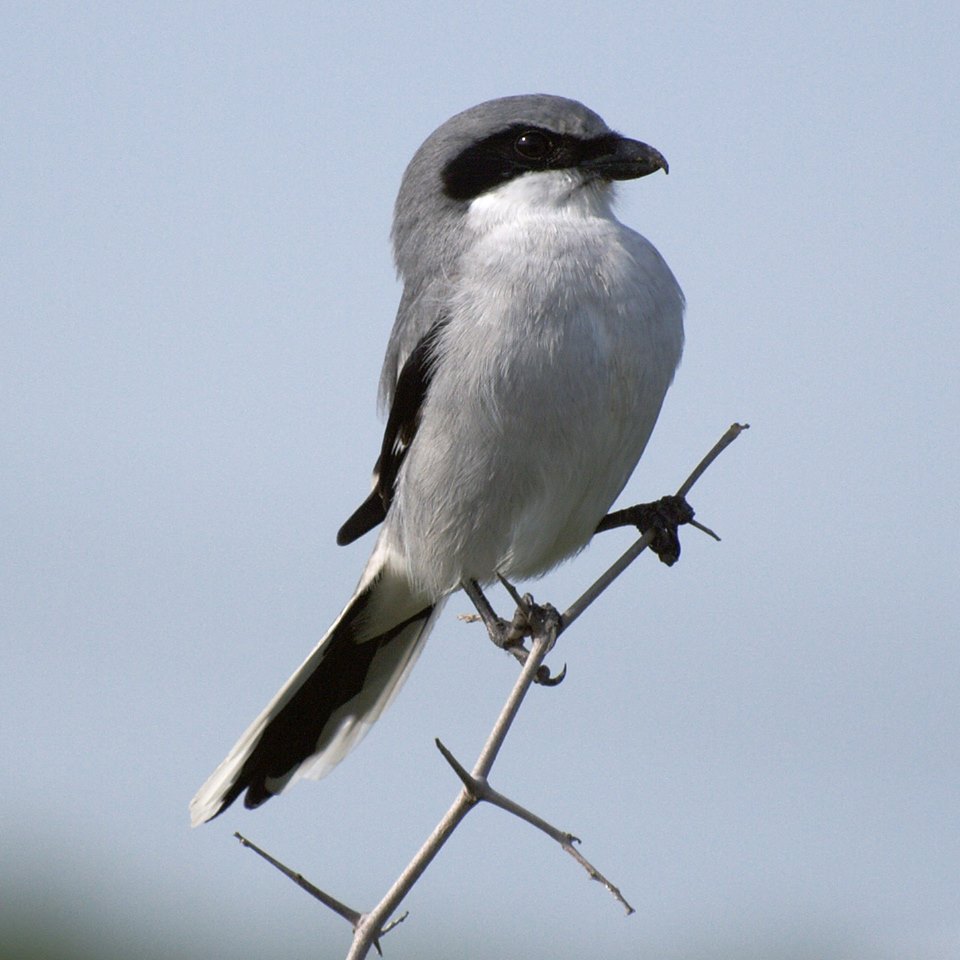
Loggerhead shrike. Photo by Terry Ross
Loggerhead shrikes have recently been found at not one but two FMR prairie restoration sites!
Endangered in Minnesota, the loggerhead once called much of the state home, but habitat destruction has taken its toll. Because they're endangered, we can't share which sites the shrikes were seen at, both are popular with the conservation volunteers who help maintain their ecological health at FMR events.
More about these tough songbirds:
— A pair of these robin-sized birds will defend territories of 5-62 acres.
— They're easily identified by their distinct black "masks," which stand out against their white breast and grey back.
— Loggerhead shrikes are known for their hunting methods. They use their sharply-hooked bill to subdue vertebrate prey by biting their neck and severing their cervical vertebrae. While consuming smaller prey like grasshoppers whole, they will impale amphibians, lizards, small snakes, mice, and even small birds on sharp objects before eating them.
Northern (Blanchard's) Cricket Frog
Status: Endangered in Minnesota
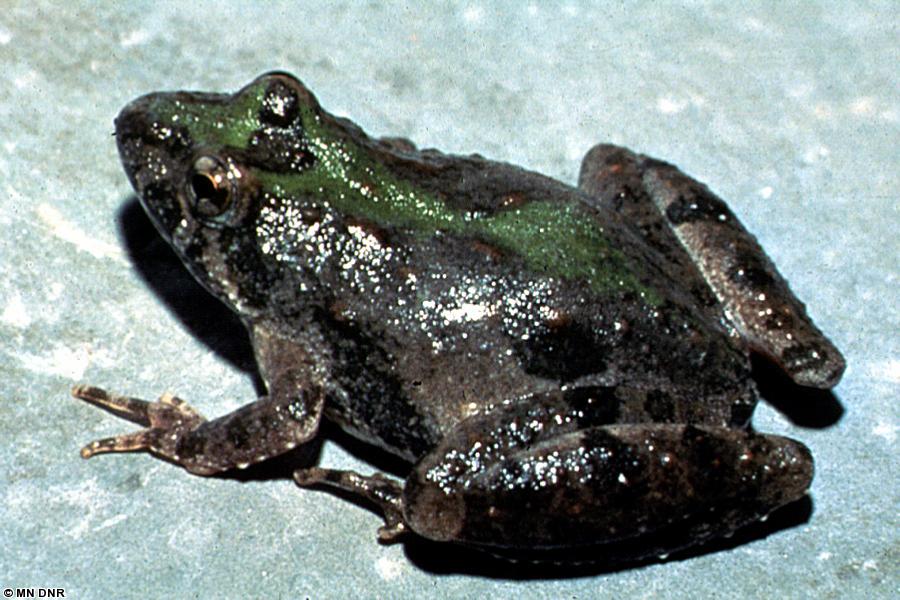
Blandchard's cricket frog (a subspecies of northern cricket frog). Photo credit: Minnesota DNR
In 2016, survey crews from our local Mississippi River unit of the National Park Service discovered an endangered cricket frog species at one of our habitat restoration sites — one of only three populations in the state! Known for being sensitive to habitat disturbance and agricultural pollution, very few Northern (or Blanchard's) cricket frogs have been reported in Minnesota since 1980. We're delighted to have them call an FMR conservation and volunteer restoration site home.
More about these rare amphibians:
— This tiny frog is only 2-3.5 cm long.
— They range in color from green to brown and can have black, yellow, red, and orange markings.
— Female frogs can lay up to 400 eggs.
— These frogs feed on small invertebrates in the water.
— Only about 5% of the population survives each winter to start a new generation.
Learn more
• About the successes of the Endangered Species Act, including the expansive and heartening 2016 report by the Center for Biological Diversity and previous summary and success reports.
• About Federally-listed endangered species in Minnesota.
• About Minnesota's endangered, threatened and species of special concern.
Become a habitat restorer
If you'd like to help restore and maintain the habitat home to the species above and many more, contact FMR Volunteer Coordinator Amy Kilgore, volunteer@fmr.org, to receive notices of FMR habitat restoration events.